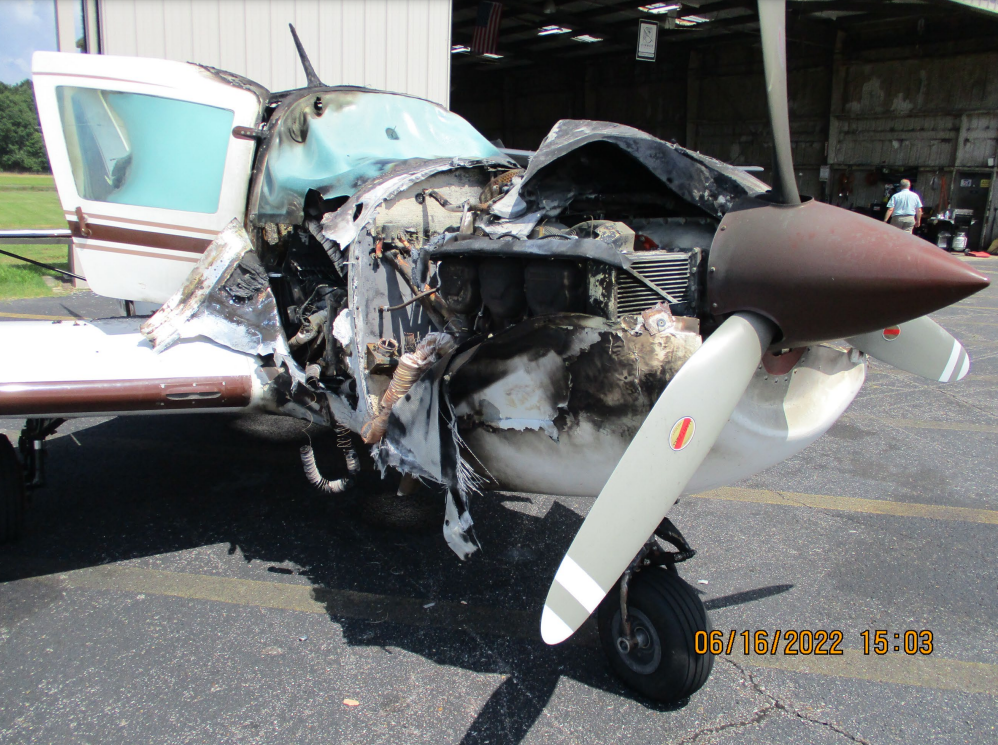
ASN Wikibase Occurrence # 279359
This information is added by users of ASN. Neither ASN nor the Flight Safety Foundation are responsible for the completeness or correctness of this information.
If you feel this information is incomplete or incorrect, you can submit corrected information.
| Date: | Thursday 16 June 2022 |
| Time: | 09:15 |
| Type: |  Bellanca 17-30A Super Viking 300A |
| Owner/operator: | Private |
| Registration: | N39880 |
| MSN: | 73-30551 |
| Year of manufacture: | 1973 |
| Total airframe hrs: | 2543 hours |
| Engine model: | Continental IO-520-K |
| Fatalities: | Fatalities: 0 / Occupants: 2 |
| Aircraft damage: | Substantial |
| Category: | Accident |
| Location: | Bruce Campbell Field Airport (MBO/KMBO), Madison, MS -
 United States of America United States of America
|
| Phase: | Landing |
| Nature: | Private |
| Departure airport: | Madison-Bruce Campbell Field Airport, MS (DXE/KMBO) |
| Madison-Bruce Campbell Field Airport, MS (DXE/KMBO) | |
| Investigating agency: | NTSB |
| Confidence Rating: |
On June 16, 2022, about 0915 central daylight time, a Bellanca 17-30A, N39880, was substantially damaged when it was involved in an accident at Bruce Campbell Field Airport (MBO), Madison, Mississippi. The pilot and passenger were not injured. The airplane was operated as a Title 14 Code of Federal Regulations Part 91 personal flight.
The pilot noticed smoke in the cockpit while on departure. He returned to land and when the smoke worsened during taxi, he stopped the airplane and shut down the engine. The pilot and passenger egressed the airplane and observed a fire in the engine compartment. They were not able to put out the fire with a fire extinguisher. The airplane sustained substantial damage to the forward fuselage.
Postaccident examination revealed the right-side exhaust system was fractured between the muffler and tailpipe. The investigation determined that a crack in the weld joining the aft ball tube to the aft muffler flange had previously failed, and a weld repair had been performed. Metallurgical examination determined that the repair weld had failed, allowing hot exhaust gases to escape onto the surrounding engine compartment components.
Maintenance records show the Airworthiness Directive (AD) calling for the repair weld to be inspected was complied with during the last annual inspection, just under a month and about 10 flight hours before the accident. The mechanic that completed the inspection was not aware of the AD requirement to spray the outside of the muffler with a penetrating oil to check for cracks, which most likely would have identified the muffler weld issue prior to the failure.
Probable Cause: The failure of a muffler weld due to inadequate maintenance, which resulted in a fire.
Accident investigation:
 |
|
Sources:
NTSB CEN22LA256
https://data.ntsb.gov/Docket?ProjectID=105284
Location
Images:

Photo: NTSB
Revision history:
| Date/time | Contributor | Updates |
|---|---|---|
| 19-Jun-2022 11:57 | Captain Adam | Added |
| 01-Feb-2024 13:10 | ASN Update Bot | Updated [Time, Operator, Other fatalities, Destination airport, Source, Narrative, Category, Accident report] |
| 07-Feb-2024 10:33 | Captain Adam | Updated [Time, Operator, Source, Narrative, Photo] |
Corrections or additions? ... Edit this accident description
The Aviation Safety Network is an exclusive service provided by:


 ©2024 Flight Safety Foundation
©2024 Flight Safety Foundation